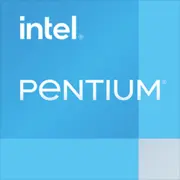Intel Pentium G850

Intel Pentium G850: A Comprehensive Review of an Obsolete Budget Processor
April 2025
1. Key Features: Sandy Bridge in Detail
The Intel Pentium G850, released in the second quarter of 2011, belongs to the Sandy Bridge architecture — the second generation of Intel Core processors. Despite its age, it is still found in budget builds and office PCs.
Process Technology and Cores
- 32 nm technology: In 2011, this was standard, but by 2025 such chips are considered outdated (modern processors use 5–7 nm technology).
- 2 cores / 2 threads: The absence of Hyper-Threading limits multitasking capabilities.
- Base frequency: 2.9 GHz, with no Turbo Boost.
Performance
- Geekbench 6: Single-Core — 474, Multi-Core — 823. For comparison, a modern budget processor like the Intel Celeron G6900 (2023) scores around ~1500/2500 points.
- Integrated graphics: Intel HD Graphics (Sandy Bridge) with a base frequency of 850 MHz. Adequate for HD video and older games (for instance, Half-Life 2 on low settings).
Key Features
- Support for SSE4.1/4.2 and AVX instructions.
- Energy efficiency: A TDP of 65 W allows for the use of compact cooling systems.
2. Compatible Motherboards
Socket: LGA 1155 — a socket that disappeared from the market in the mid-2010s. New motherboards for it are no longer being produced, so the only option is the used market.
Chipsets:
- H61, B65, H67: Budget options with basic functionality (USB 2.0, SATA II).
- Z68, P67: For enthusiasts, with overclocking support (though the G850 itself is not unlocked).
Examples of Boards:
- ASUS P8H61-M LE: Compact micro-ATX, used price — $15–25.
- Gigabyte GA-Z68XP-UD3: More advanced, but rare in 2025.
Selection Tips:
- Check the condition of capacitors on used boards.
- Ensure BIOS version support for Sandy Bridge (not all LGA 1155 boards are compatible with Ivy Bridge).
3. Supported Memory Types
The Pentium G850 works only with DDR3:
- Officially: DDR3-1066/1333 MHz.
- Maximum capacity: 32 GB (but motherboards from that era rarely support more than 16 GB).
Features:
- No support for DDR4/DDR5 — this is the main limitation for upgrades.
- To enhance system responsiveness, use dual-channel mode (2 modules of 4 GB instead of 1×8 GB).
4. Power Supply Recommendations
With a TDP of 65 W, the Pentium G850 is not demanding in terms of power:
- Minimum: 300 W (for example, EVGA 300 BR).
- Recommended option: 400–500 W (Corsair CX450) — sufficient for a discrete graphics card like the GTX 750 Ti.
Important:
- Avoid cheap noname power supplies — they can damage older components.
- For systems without a dedicated graphics card, 250 W is sufficient.
5. Pros and Cons of the Processor
Pros:
- Price: On the used market — $10–20 (for a complete system with a motherboard and memory — $50–70).
- Energy efficiency: Suitable for media centers or routers.
- Ease of cooling: Even the stock cooler is adequate.
Cons:
- Outdated architecture: Falls short even against budget modern CPUs (for example, the Intel N100).
- Lack of multithreading: 2 threads — a problem for browsers with 10+ tabs.
- No support for modern interfaces: USB 3.0, NVMe, HDMI 2.0.
6. Use Cases in 2025
Office Tasks:
- Document work, Excel, web browsing (1–5 tabs).
- Example: A system based on G850 + 8 GB DDR3 + 240 GB SSD can handle Word and Zoom but may lag when simultaneously running Discord and YouTube.
Multimedia:
- Playback of 1080p video via VLC or Kodi.
- Limitation: 4K is not supported even hardware-wise.
Gaming:
- Older titles: CS:GO on low settings (30–40 FPS), World of Warcraft: Cataclysm.
- Emulators: PlayStation 1, Nintendo 64 — no problems.
7. Comparison with Competitors
AMD Athlon II X2 260:
- Similar performance, but the AM3 platform is even less relevant in 2025.
Intel Celeron G5905 (2020):
- A modern equivalent: 2 cores/2 threads, but based on the Comet Lake architecture (14 nm), Geekbench 6 — ~900/1600. New price — $50.
Raspberry Pi 5:
- For enthusiasts: ARM processor with support for HDMI 2.1 and USB 3.0, power consumption of 5 W.
8. Practical Assembly Tips
- SSD is a must: Kingston A400 240 GB ($25) will reduce system boot times.
- Memory: 8 GB DDR3 (2×4 GB) — the minimum for Windows 10/11.
- Graphics card: If gaming is needed, add a GT 1030 (GDDR5) — it does not require additional power.
- Case: Any mini-tower with ventilation will do (for example, Fractal Design Core 1100).
9. Final Verdict: Who is the Pentium G850 Suitable For?
This processor is suitable for:
1. Enthusiasts building retro computers to run old games.
2. Budget office systems, where minimal cost is key (for example, a cash register terminal).
3. Upgrading old PCs (if the motherboard and memory are already available).
Alternative for New Builds: Even used Intel Core i5-2500 (4 cores/4 threads, $20–30) or a new Intel N100 Mini-PC ($150) offer better performance and modern interfaces.
Conclusion: The Pentium G850 in 2025 is a relic, but it can still be useful in niche scenarios. However, for most users, it makes more sense to invest in more modern solutions.
Basic
CPU Specifications
Memory Specifications
GPU Specifications
Miscellaneous
Benchmarks
Compared to Other CPU
Share in social media
Or Link To Us
<a href="https://cputronic.com/en/cpu/intel-pentium-g850" target="_blank">Intel Pentium G850</a>